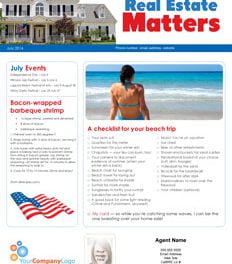Mortgage Concepts is a recurring video series covering best practices and compliance education for California mortgage loan originators (MLOs). This video introduces the Home Ownership and Equity Protection Act by outlining its purpose and requirements. For course credit toward renewing your NMLS license, visit firsttuesday.us.
The Home Ownership and Equity Protection Act (HOEPA) was passed in 1994 as an amendment to the Truth in Lending Act (TILA).
As its title implies, HOEPA’s purpose is to protect homeowners from predatory lending practices such as short-term balloon loans and prepayment penalties. Where TILA functions as a broad shield for homeowners, HOEPA more narrowly addresses high-cost home loans, also known as Section 32 loans.
Section 32 loans require additional disclosures by lenders before loan closing. In practice today, Section 32 loans are few and far between. Restrictions on their loan terms, the additional disclosures required and heavy penalties for violations make these loans unattractive to investors. Thus, they are largely shunned by lenders and originators.
However, knowing what constitutes a high-cost loan is part of how MLOs, brokers and lenders avoid making such loans.
Section 32 loan designation applies to personal-use loans secured by one-to-four unit residential property (or personal property) which is used as the borrower’s principal residence.
For instance, a loan secured by a houseboat used as a principal residence may be designated a Section 32 loan. In contrast, a loan secured by a single family residence used as the borrower’s second home may not be designated a Section 32 loan. [12 CFR §1026.32(a)(1)]
Exempt from the Section 32 designation are:
- reverse mortgages;
- construction loans financing the initial construction of a new dwelling;
- loans originated and financed by a Housing Finance Agency; and
- S. Department of Agriculture Rural Development Section 502 direct loans. [12 CFR §1026.32(a)(2)]
Thus, purchase-money loans, home improvement or remodel loans and home equity lines of credit are subject to Section 32 thresholds.
To determine whether a loan is a Section 32 loan, three different coverage tests apply, based on:
- the loan’s annual percentage rate (APR);
- the points and fees paid in connection with the loan; and
- the prepayment penalties charged under the loan or credit agreement. [12 CFR §1026.32(a)(1)]
If a loan exceeds thresholds set by any one of these criteria, the loan is considered a Section 32 high-cost loan.













